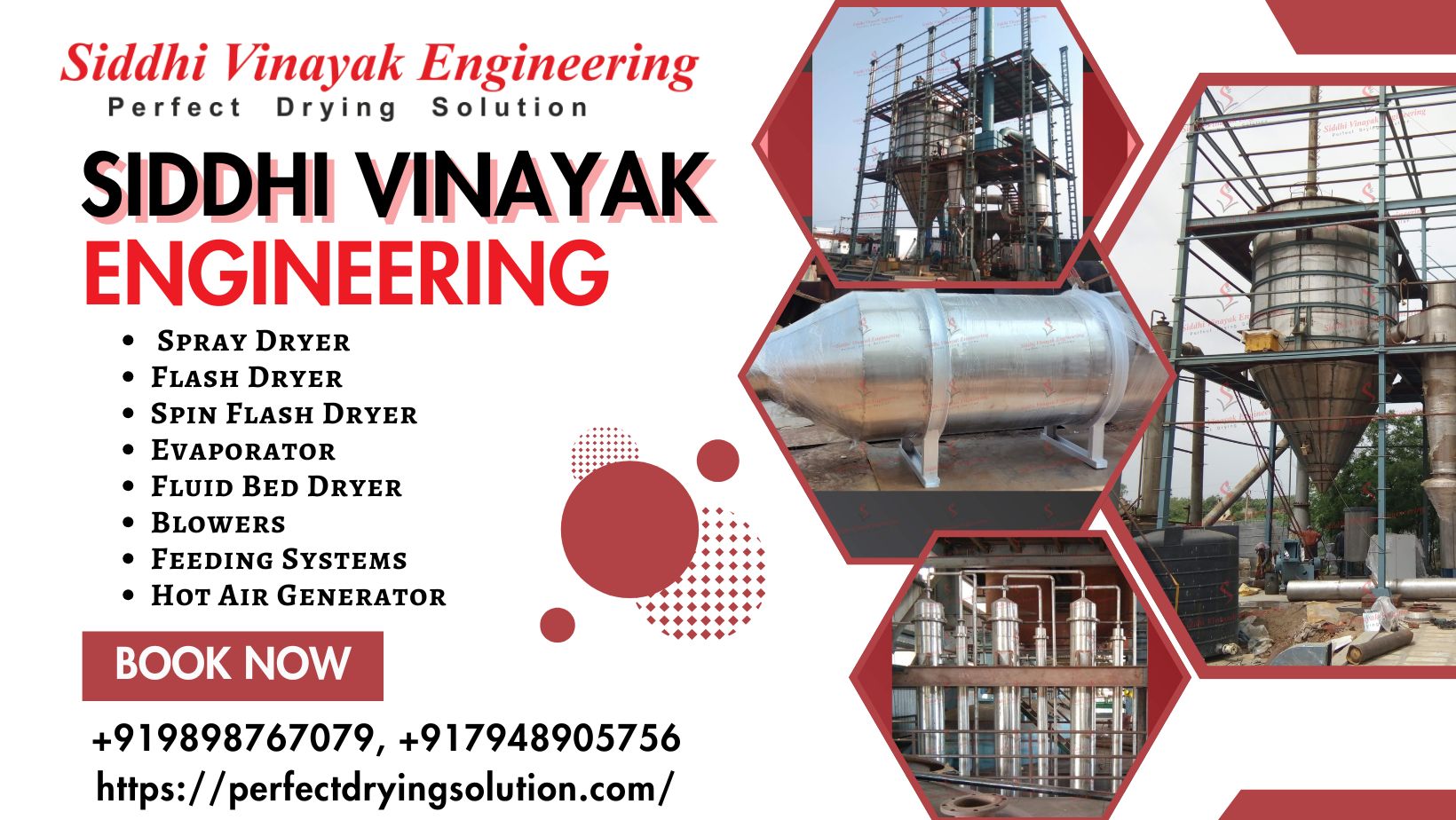
Flash Drying Systems
Flash Drying Systems
Description
A Flash Drying System is a high-speed drying technology used to remove surface and bound moisture from solid materials in a very short period. It works by suspending the material in a hot air stream, which rapidly evaporates moisture. Flash dryers are ideal for drying thermally sensitive materials such as food products, pharmaceuticals, chemicals, starch, biomass, and minerals. These systems are designed for continuous operation, energy efficiency, and minimal space usage.
Where It's Used
-
Food and starch processing industries
-
Chemical and pharmaceutical manufacturing units
-
Mineral and metal powder drying plants
-
Ceramic and pigment industries
-
Pesticide and fertilizer production plants
-
Biomass, sludge, and waste drying facilities
Uses
-
Drying of starch, wheat gluten, proteins, and cellulose
-
Rapid drying of thermosensitive chemicals and APIs
-
Drying of agro-waste and industrial sludge
-
Pre-processing in powder and granule manufacturing
Applications and Benefits
Applications:
-
Food and dairy powder production
-
Drying of industrial and agricultural biomass
-
Paints, dyes, and pigment powder preparation
-
Drying before milling or granulation
Benefits:
-
Ultra-fast drying (seconds vs. hours)
-
Energy-efficient process with minimal heat damage
-
Small footprint compared to traditional dryers
-
Continuous operation for higher throughput
-
Low maintenance and quick cleaning
-
Preserves material properties during drying
-
Suitable for both heat-sensitive and non-sensitive materials
Key Features
-
Pneumatic conveying and drying in a single step
-
High-speed drying chamber with turbulence
-
Cyclone separator for particle recovery
-
Optional bag filter or scrubber for exhaust
-
PLC-based control for temperature and feed rate
-
Modular design – easy to integrate into existing plants
-
Designed to prevent material degradation or clumping
-
Scalable for lab, pilot, or industrial production
Importance
Flash Drying Systems are critical in industries requiring moisture reduction in minimal time, especially for heat-sensitive or fine particles. It helps prevent microbial growth, reduces drying costs, and enhances product shelf life. Its continuous nature also supports uninterrupted industrial production.
Significance
-
Promotes energy-efficient and eco-friendly drying solutions
-
Drives innovation in instant drying for critical applications
-
Reduces operational time and labor dependency
-
Essential for zero-waste and biomass utilization programs
-
Increases throughput and consistency in material drying
Manufacturer & Supplier in India
India is home to several advanced flash dryer manufacturers located in Ahmedabad, Pune, Hyderabad, and Chennai. These companies offer cost-effective, high-efficiency dryers that meet international standards and export to over 30 countries. With strong service networks, Indian suppliers ensure smooth installation, operation, and after-sales support.
Why Choose Us?
-
Decades of experience in industrial drying solutions
-
Energy-saving systems with low operating cost
-
CE and ISO-certified manufacturing
-
Tailored solutions for pharma, food, and agro sectors
-
Turnkey setup and commissioning across India
-
Strong service team and AMC contracts
-
Excellent return on investment with long service life
10 Frequently Asked Questions (FAQs)
1. What is a flash drying system?
It’s a drying technology that rapidly removes moisture from materials by exposing them to a hot air stream while suspended in a drying chamber.2. Which industries use flash dryers?
Industries such as starch, food, agro-waste, pharma, pigment, chemical, and biomass use flash dryers for efficient drying.3. How fast can a flash dryer dry materials?
Drying typically occurs within 1–10 seconds, depending on the material and system configuration.4. Can it dry heat-sensitive materials?
Yes, flash dryers are ideal for drying thermally sensitive materials like proteins, enzymes, and starches.5. What materials are suitable for flash drying?
Powder, slurry, wet cake, pastes, and granulated materials can be dried effectively using flash dryers.6. How much energy does a flash dryer consume?
Flash dryers are more energy-efficient than rotary or tray dryers due to shorter residence time and heat recovery options.7. What capacity options are available?
From lab-scale dryers (1–5 kg/hr) to industrial models (up to 10,000+ kg/hr), flash dryers are available in various capacities.8. What are the maintenance requirements?
Regular inspection of filters, cyclones, and fans, along with cleaning and lubrication, ensures long-term efficiency.9. Are Indian-made flash dryers reliable for export?
Yes, Indian flash dryers are in high demand for their performance, pricing, and compliance with international standards.

